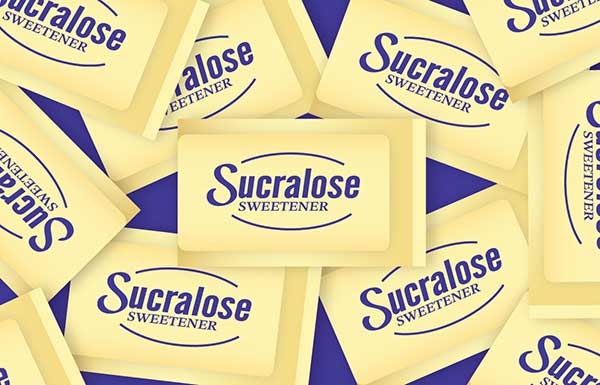
BY DR. BAYNE FRENCH, MD DC
With the sheer volume of lectures I’ve sat through its miraculous I don’t have hemorrhoids. I don’t, as far as you know. Some of the most impactful things I’ve learned, I had heard before, several times, over the previous years. My readiness to absorb the little nugget of wisdom was not there before. Perhaps I fell asleep, the lecturer sucked, or my piles were distracting me.
I had been exposed to a concept several times. Worded a little differently, and spoken or written by those with different styles. It then stuck, led to more exploration, and then was subjected to the court of clinical empiricism. Meaning I tried it out and observed outcomes. That’s why it’s called Medical Practice.
In the tome Lipids. A Different Perspective (EN #132) I wove thoughts on lipids in with mechanical engineering philosophy from Dr. Bernard Roth PHD. In my unedited manuscript, quotes from this engineering stud that appeared in his book The Achievement Habit, were italicized. In the publishing process the italics were dropped, an issue my counselor tells me I’m recovering from nicely. This article would be a good place to re-familiarize yourself with just what lipids and fats are, and how and why they’re measured.
What are we trying to do here?
Most people ask themselves this when they read my articles. Or meet me. What we’re trying to do is die at an older age, highly functional to the end, and with limited ass-time in health care settings. If you don’t want these things then stop reading.
Aside from not smoking, the most powerful thing an individual can do to avoid disease is be metabolically efficient. Recall that metabolism are the steps processing nutrients after the digestion of food. It’s vastly complicated and subject to amazing variability among individuals. It is largely determined by the genetic hand we’ve been dealt, with ample opportunity for environment (stress, sleep, food, exercise, supplements, etc.) to interact with your genome. This interplay of environment and genome is termed epigenetics.
Below are some pathways in our metabolism that I jotted down over coffee this morning:

Most disease is a consequence of distorted metabolism over time. Usually many years. An emerging concept is that seemingly unrelated diseases like Alzheimer’s, heart disease, stroke, diabetes, and cancers are all different outcomes of metabolic disease and genetic propensities.
Zebras:
You’re all zebras by the way. Not that you’re mean and incapable of being domesticated. Which may be true, but I mean you are an individual. I go on and on about this in EN #135 article You’re All Zebras. Individual health optimization does not involve being plugged into a data set, based on population reference ranges. I’m not saying these large cookbook guidelines are not without merit. But I view them as a place to start. Global human wellness depends on individual wellness. And individual wellness involves being metabolically efficient.
The Zebras article is a dialogue about the Golden Calf, cholesterol and its standard treatment, statin medication. It riled a few non-critical thinkers that insist on a unified message and relish dogma. It was even called “fake news” by one triggered reader. Convincing has no role in empowerment. The article was written to help you be aware of and investigate further modalities for metabolic efficiency, and was well referenced. Several action items were offered, including revisiting the triglyceride to HDL ratio (tg/HDL).
Tg/HDL Ratio:
Recall that triglyceride is fat. It’s that delicious whitish substance on a steak and what the majority of Americans are packing around in their midsections. Having it and eating it is vital, but having it does NOT come from eating it. The vast majority of fat on our bodies and in our bloodstream is made in our livers from carbohydrate.
HDL is a lipoprotein particle that carries different components and has properties that are considered favorable. Thus “good cholesterol”.
According to Lemos da Luz et al in the American Journal of Cardiology in 2005 putting the measured numerical fat value over that of good cholesterol and doing some simple math gives a number that is the “most powerful” predictor of the #1 cause of death in America…heart disease. Why is that? Because Dr. Lemos da Luz said so.
And that absolutely plays out in clinical practice. The empiric observations of individuals that have elevated blood sugar (prediabetes or Type 2 diabetes), large abdominal girth, and poor conditioning also have high triglycerides and low HDL leading to an elevated tg/HDL ratio. Results from a dietary history are even more predictable. This growing subset of patients are 100% excessive carbohydrate eaters. But what medical provider has time to process empiric observations and take a dietary history? Plugging individual patients into population reference ranges is just too exhausting.
Conclusion:
Strive to have a tg/HDL ratio under 3. The most powerful mechanisms to do this are HABITS. Making a habit out of viewing carb as a garnish, not a staple; having decent physical conditioning; supplementing with things like fish oil; and reserving sugar for the rare special occasion.
Here’s a paragraph from Lipids. A Different Perspective:
Let’s take a look at a multi-decade study done on almost 40 thousand men. Dead men, but men never the less. Dr. Vega et al (BMJ Journals 2013) examined the National Death Index from 1970 to 2008. The tg/HDL ratio was used in the analysis to correlate death from CVD. Men with a ration of >3.5 had a much higher incidence of CVD death, and a 200% increased incidence of Type 2 Diabetes. This point is critical for you to understand…a high tg/HDL ratio implies sick metabolism. Sick metabolism leads to high insulin levels, insulin resistance, weight gain, diabetes, and eventual heart disease and early death.
The standard cholesterol panel is cheap and widely available. Ask your provider for a copy of the results then do your own math. The tg/HDL ratio will not be automatically calculated and if you ask your provider about it they will be either confused or angry. Determining your ratio can provide information for you to critically examine your lifestyle, choices, and dogma. And this is where the meaningful work really begins.









8 comments
A quick web search of LDL/HDL ratios indicated a 5.1 or lower was a good level. My ratio over the last 10 years averages 1.7< according to the LDL/HDL ratio. The information above states a “3” being OK and 3.5> tg/HDL means get your affairs in order sonny boy.
Am I reading this right: LDL/tg are the same correct? I’m 74 and have none of the boxes checked off for heart disease. I’m led to believe I have good ratios. My doc I see every 6 months along with a blood profile and he not concerned. Thanks for the research and information. Hope your HEMI’S are relaxed. Chuck Howard
———
Hammer Nutrition replied:
Hi Chuck, The only ratio I wrote about was Triglyceride/HDL (fat over good cholesterol). From my research and clinical experience, this is the most useful ratio. It is not the same as other ratios. – Dr. French
FYI good book on your subject. The Statin Disaster by David Brownstein, M.D.
www.drbrownstein.com
Two things:
1. My cholesterol for most of my adult life (I’m 69) has been near or just over 200. I have had Heart Tests that show my blood vessels are very clear of buildup. Doing the TG/HDL ratio for the first time, it’s .76, definitely less than 3. Wondering if I have needlessly worried all these years about the "cholesterol near or just over 200.
2. Is the “pathways to metabolism chart” actually supposed to be readable? Or is it just an illustration of how complex metabolism is?
———
Hammer Nutrition replied:
Hi Bob, Total cholesterol over 200 in my opinion is entirely useless. You should disregard it completely and with your amazing Tg/HDL ratio, I’m not sure you need cholesterol ever tested again. – Dr. French